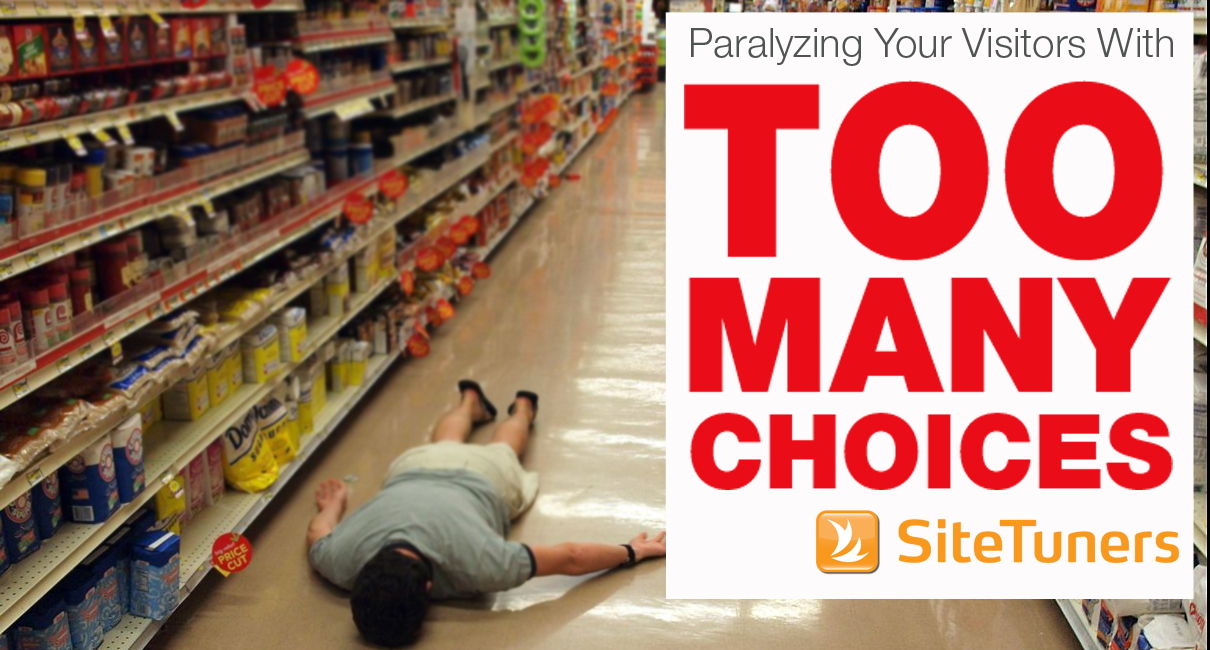
We often hear that choice is good. Many extol the virtues of the “long tail,” and the fact that given more choice, some people will take advantage of it. But this only applies to situations where someone really cares about the subject or task at hand, is knowledgeable about it, and has significant time and resources to expend in the discovery of novel and interesting alternatives.
Unfortunately, that is very rarely the situation when someone visits your landing page. Most people are in a hurry and don’t have the time, knowledge, or interest to wade through a bunch of choices.
In most cases, too many choices can cause paralysis and inaction. If the visitor can’t find a way to easily get closer to their goal, they will simply leave.
Consider Adorama’s home page. It illustrates many of the issues with having too many choices.
Adorama sells a broad array of photography-related gear, and the visitor is presented with a bewildering array of choices. There are 95 clickable items on this page! Product shots feature a dozen disparate items that range in price from $89.95 to $2,699.95. A bright, animated slideshow rotates through seven different promotional messages across the top of the page. Its motion and prominence draws the eye and steals attention from other areas of the page. Long lists of categories, products, brands, and departments create a confusing navigation schema on the left side of the page, while two levels of top navigation provide the user more cryptic options like “Learn” and “Watch.”
What Are Visitors Expected to Do?
-
- Watch the scrolling slideshow? If they came to the site for a $2,000 camera, do you really want to distract them with an offer to make a photobook masterpiece?
-
- Buy a refurbished zoom lens compatible only with certain Nikon cameras? This is limited to a very small segment of the visitors to the home page (who already own the compatible models of cameras).
-
- Click on the vaguely-titled “Photo Essentials” category? Even if they read down to the 12th position on the left navigation bar to reach this item, they would be hard-pressed to figure out what it meant.
-
- Click on “Copiers/Printers/Fax Machines”? Most people would not have a compelling reason to buy these kinds of items from a company whose tagline is “The Photography People.”
-
- Watch a video on Inverse Square Law? This is probably not a pressing concern for most visitors.
While each item on Adorama’s page might be useful to a subset of its audience, the cumulative effect of all of this clutter is that it is squandering precious milliseconds of every visitor’s attention. Visitors are forced to wade through a lot of muck to even understand if there is any relevant information for them at this site. Will they do this? Maybe. But many will simply throw up their hands in frustration and try another website.
The main goal of a broad-selection online catalog should be to efficiently direct all visitors to a relevant set of product choices, and to help them decide among them. The Adorama page does not do this effectively. A better alternative would be to focus on a smaller number of choices that apply to everyone and to funnel visitors deeper into the site.
Does your landing page offer too many choices? Here’s how to fix it:
-
- Don’t present detail too early in the process
-
- Group related choices into a smaller number of categories
-
- Use visual shortcuts to reduce reading
This article originally appeared in Tim’s ClickZ column May 9, 2011
Take your conversions to the next level.Learn how our experts at SiteTuners can help kickstart your conversion rate optimization process or get better results from your CRO efforts. Give us 30 minutes, and we’ll show you a roadmap to your digital growth! |


